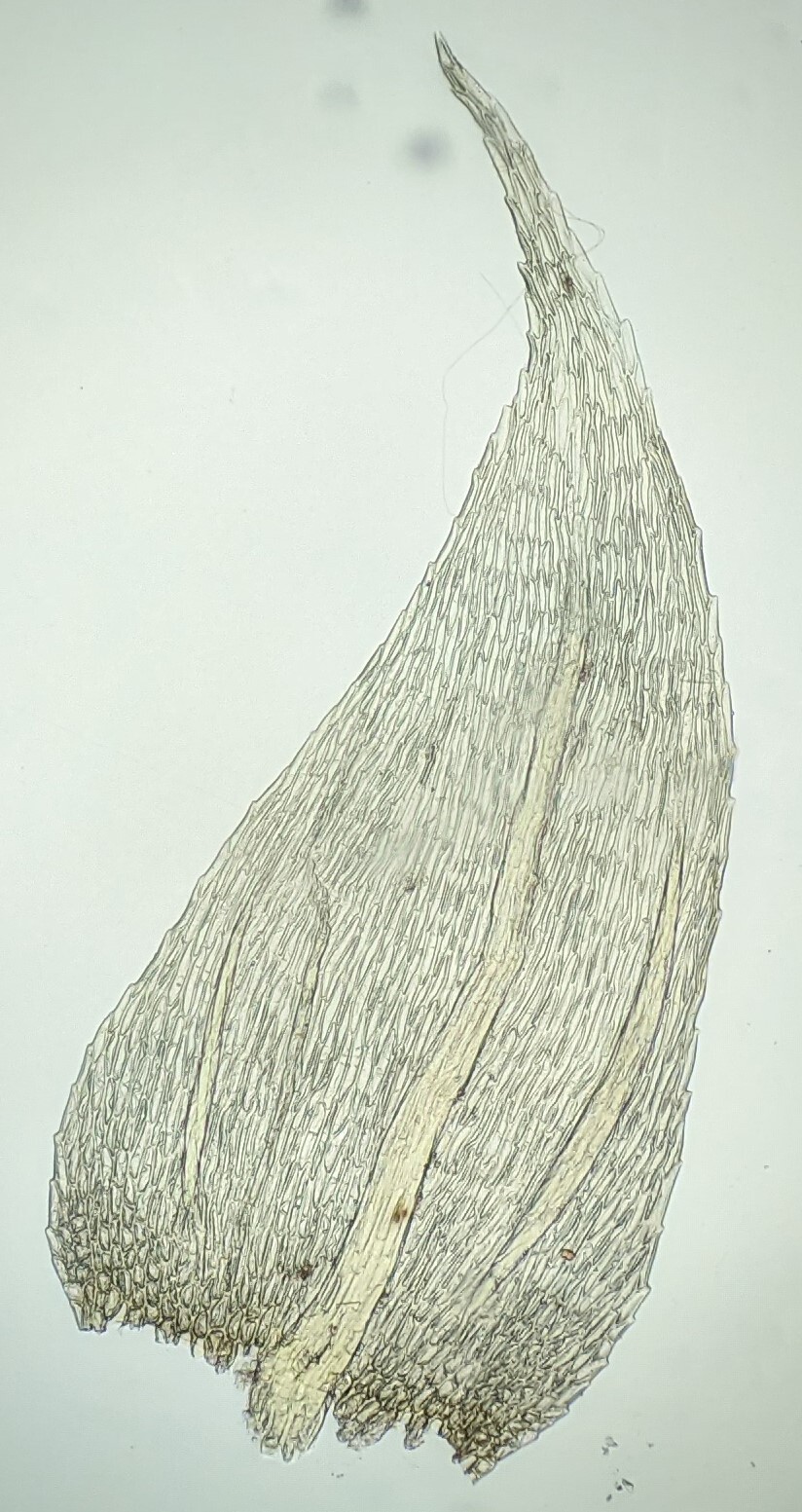Brachytheciastrum
Autoicous or rarely synoicous (not in Victoria). Asexual propagules absent. Mats or tufts on soil, rock or tree bases. Stems creeping, irregularly or regularly branched, with sparse rhizoids ventrally; paraphyllia absent; central strand present. Branch and stem leaves differentiated mostly by size and shape, erect to erect-spreading when moist, scarcely altered when dry, arranged around stem and facing all directions (not in Victoria) or falcate-secund to almost circinate, plicate or not (not in Victoria), usually slightly decurrent; costa extending 40–75% of leaf length, usually ending in a spine; laminal cells linear, shorter at base, smooth or prorate; alar cells differentiated, quadrate to shortly rectangular, not inflated, ascending apically along margin. Stem leaves ovate to linear-lanceolate; apex acuminate; margin entire to serrulate, often recurved near base or occasionally along entire length. Branch leaves smaller than stem leaves, ovate to linear-lanceolate (not in Victoria); apex obtuse and apiculate to acuminate; margin denticulate to serrulate or occasionally serrate, recurved. Seta rough or smooth (not in Victoria). Capsule inclined to horizontal, straight (not in Victoria) or curved, ovoid to obloid, with an annulus. Calyptra cucullate, smooth, glabrous or sometimes finely pilose at base. Operculum conic. Peristome double; endostome segments similar length as exostome, with a high basal membrane; cilia present.
Around seventeen species shared between temperate and subtropical regions throughout the world (Orgaz et al. 2013); one species in Victoria.
Brachytheciastrum comprises a group of species that have been included in Brachythecium and recognised as the informal B. velutinum species group or as the subgenus or section Velutina (Ignatov & Huttunen 2002; Ignatov 2014). Brachytheciastrum form a group in a phylogeny of combined chloroplast and nuclear DNA sequences most closely related to Homalothecium rather than Brachythecium (Vanderpoorten et al. 2005). Phylogenies are yet to incorporate DNA sequences from the sole Victorian representative, B. paradoxum (Hook.f. & Wilson) Ignatov & Huttunen, and its placement here follows Ignatov & Huttunen (2002) which was based on its morphological similarity to species confirmed to belong to this group in molecular phylogenies.
 Spinning
SpinningIgnatov, M.S. (2014). Brachytheciaceae, in Flora of North America Editorial Committee (eds), Flora of North America, vol. 28, pp. 404–468. Oxford University Press, New York.
Ignatov, M.S.; Huttunen, S. (2002). Brachytheciaceae (Bryophyta) – a family of sibling genera. Arctoa 11: 245–296.
Orgaz, J.D.; Cano, M.J.; Guerra, J. (2013). Taxonomic revision of Brachytheciastrum (Brachytheciaceae, Bryophyta) from the Mediterranean Region. Systematic Botany 38: 283–294.
Vanderpoorten, A.; Ignatov, M.S.; Huttunen, S.; Goffinet, B. (2005). A molecular and morphological recircumscription of Brachytheciastrum (Brachytheciaceae, Bryopsida). Taxon 54: 369–376.
